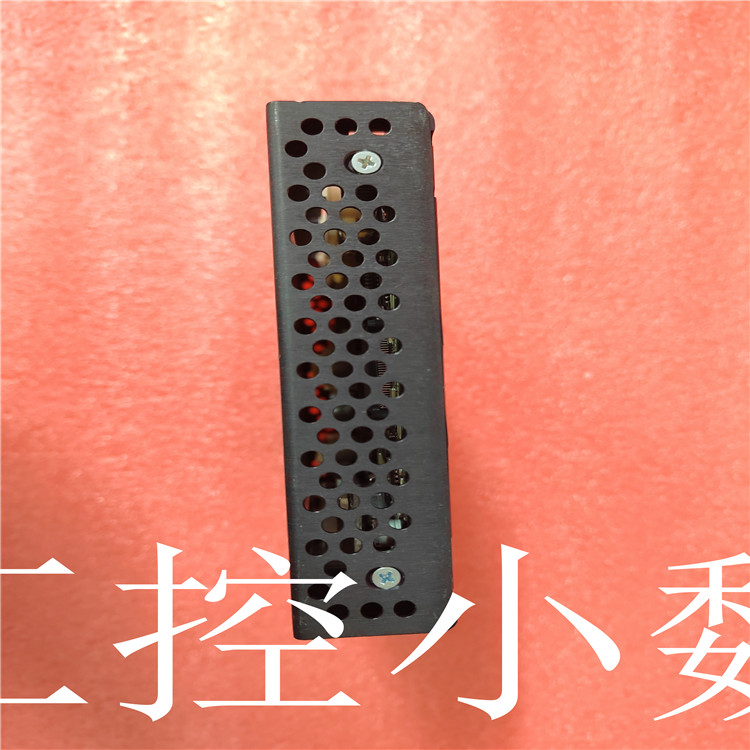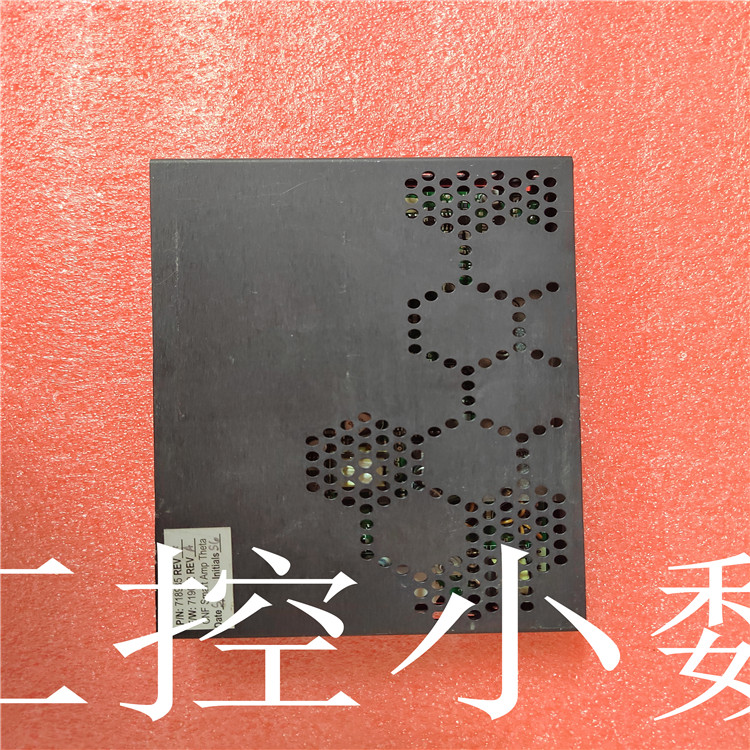



¥ 价格面议
¥ 价格面议
¥ 价格面议
¥ 价格面议
易卖工控网(www.ymgk.com)提供”179126备件RELIANCEE安装方法和要求”,产品详情:品牌/厂家:RELIANCEE、型号:179126、成色:全新、货期:现货 1天内发货、保修:180天,更多产品详情就上易卖工控网。
179126备件RELIANCEE施工要求结构组成







2022年3月29日,施耐德电气在生态圈逐渐强大之时,重磅开启“绿色智能制造创赢计划”第三季。在2季和第二季实践的基础上,施耐德电气在第三季中给我们带来了更多、更2的全新亮点。工业和信息化部国际经济技术合作中心副主任李毅锴在启动仪式上特别表示:“尽管受复杂多变的国内外环境和疫情影响,中小企业作为支撑经济发展2活跃的主体和创新活动的主力军,为经济社会发展做出了重要贡献,但也面临着诸多挑战。国家高度重视中小企业发展。今年《政府工作报告》从加大企业创新激励力度、坚持纾困和培优两手抓,着力培育‘专精特新’中小企业等方面,出台了若干惠企政策。工业和信息化部作为国家促进中小企业发展工作的主管部门,也在不断加大中小企业纾困帮扶力度,强化2企业培育,引导广大中小企业走‘专精特新’发展道路,促进产业数字化绿色化转型。”
创赢计划的推出,将帮助具有智能制造技术创新潜力的中小企业,突破技术与商业壁垒,让中小企业找到成长壮大的新突破口,快速成长为2的绿色智能制造工程和系统集成解决方案提供商,真正为拥有某一领域技术专长的中小企业和工业应用场景之间搭建“桥梁”,合力打通工业企业数字化转型的“2后一公里”。
借此契机,工控网很高兴与施耐德电气工业自动化业务中国区数字化生态圈进行了深入交流,她为我们分享了她对于“绿色智能制造创赢计划”的深刻理解,前两季创赢计划的复盘感受以及对第三季创赢计划的期望。截至目前,“绿色智能制造创赢计划”已经为二十余家初创型企业提供技术和资源,涌现出了大量创新的工业技术和应用场景。在今年的启动仪式上,参加过2021年创赢计划的悠桦林信息科技(上海)有限公司市场总监胡奇豪更是表示:“我们在培训和POC实践中收获颇丰,更是超预期地开拓了一个新的营销思路和业务赛道。”
单打独斗不是好汉,凝聚众心才是英雄。从前两季创赢计划的报名、落地、场景和合作数据来看,施耐德电气已经将整个生态圈一步步发展壮大,创赢计划的关注度也越来越多。
:“经过对前两季创赢计划的深度复盘,我们在未来还是会继续把信息化、工业化深度融合,践行地更加扎实,寻找对于工业企业用户更有价值的场景,再融合到创新型中小企业或者科技型企业,大家一起打造一系列联创方案。”
据了解,2022年,创赢计划第三季将会打造“加速营”和“成长营”双营模式、“绿色智能制造技术融合创新专家委员会”以及丰富的“工业场景”等全新亮点。具体来说,为赋能更多的“专精特新”企业,第三季将延续招募、筛选报名企业的加速营模式,针对一线工业场景亟需的高可复制性的数字化解决方案,“由0到1”进行创新,从而解决终端客户和市场需求,为构建工业底层的数字化能力添砖加瓦。
成长营
此外,还将开启全新的“从1到N、快速复制推广”的成长营模式,从前两季PoC成果中筛选出获得客户及市场认可、有前景且较为完整的联创方案,进行更有针对性的改进和提升,使之快速落地形成规模化发展。
据蔡婷婷介绍,新增加的成长营模式,是希望将加速营打造的联创方案进行落地和规模化复制,并见到实际的落地效果。对于施耐德电气来说,希望不仅能够助力中小企业业务发展,也能够实现通过创新带来新的业务增长点。8GB local storage +SD card support, support local data cache and offline applications;
4, three-in-one serial port, support RS485/RS232/RS422 three kinds of electrical interface;
5. Support edge computing, realize data optimization, real-time response, agile connection, model analysis and other services at the edge nodes of the Internet of Things, effectively share cloud computing resources and support simultaneous access of multiple devices;
6, support DC9~36V wide voltage input, adapt to a variety of complex industrial site;
7, support LED lamp customization, users can define LED lamp according to need (such as equipment status, edge calculation results, etc.);
8, no client, support on-demand remote upload, download, effectively save network traffic;
9, support gateway health self-diagnosis, fast detection of gateway failure;
Support a variety of standard VPN (PPTP/ L2TP/IPSec/OpenVPN);
11, support network active/standby mode, according to the network situation intelligent switch network access mode (support intelligent network diagnosis);
12, powerful cloud software center support, according to the actual application scenarios to install the corresponding firmware, applications, etc.
13, support a variety of remote control mode (no password/password/disabled), at the same time with physical remote control switch, one button switch remote control function;
14. Support multi-link well development data collection;
15. Support 4G traffic detail analysis and flow control;
16. Support remote gateway management; Support network self-recovery;
17, support base station and GPS mixed positioning mode and local WEB GPS position presentation;
18, support local WEB endpoint table configuration, support local configuration design and presentation;
Industrial edge computing gateway, data collection support 5000 points;
20. Support data multi-channel forwarding and third-party platform access. Generally speaking, brain-like computing refers to making essential changes to existing computing systems and systems in hardware implementation, software algorithm and other aspects by referring to the basic rules of information processing in the brain, so as to achieve significant improvements in computing energy consumption, computing power and computing efficiency. Communication with the rapid development of computer technology in the past decades has brought the information revolution, but the development of the existing computing systems are still facing two serious bottleneck: one is the system energy consumption is too high, the second is for the human brain can easily do cognitive tasks (such as language and understanding of the complex scene, etc.) processing power is insufficient, it is difficult to support a high level of intelligence. The brain's obvious advantages in these two areas make borrowing from the brain a very promising direction. Class cerebral calculation are life science, especially the height of the cross and fusion brain science and information technology, the technical connotation includes for a deep understanding of the principle of brain information processing, on this basis to develop new type of processor, algorithm and system integration architecture, and applied it to a new generation of artificial intelligence, data processing, human-computer interaction and so on widely. Brain-like computing technology is expected to enable artificial information processing systems to produce intelligence comparable to the human brain with very low energy consumption. Many people believe that the substantial progress in this direction will be the prelude to the intelligent revolution and bring profound changes to social production and life. [2] Research on brain-like computing can be roughly divided into neuroscience research, especially research on the basic principles of brain information processing. The research of brain-like computing devices (hardware) and brain-like learning and processing algorithms (software) are three aspects. In neuroscience, there have been very rapid advances in the last couple of decades, especially in the last decade or so. Now we have accumulated a wealth of knowledge about how the brain works, which provides an important biological basis for the development of brain-like computing. The human brain is a complex network of nearly 100 billion neurons through trillions of contact points (synapses). The material basis for the realization of sensory, motor, cognitive and other brain functions is the orderly transmission and processing of information in this huge network. The structure and function of individual neurons is now well understood, thanks to generations of neuroscientists. But much remains to be done about how relatively simple neurons organize themselves through networks to form the most efficient information-processing system we know of. At the microscopic level, the brain network is represented by synaptic connections, at the mesoscopic level by connections between individual neurons, and at the macroscopic level by connections between brain regions and subregions. The information processing on different scales of brain network is a unified whole with important differences and close relationship. At present, the research hotspot of neuroscience mainly focuses on analyzing the structure of brain network at the above levels, observing the activities of brain network, and finally clarifying the function of brain network, namely the mechanism of information storage, transmission and processing. To achieve this goal, need to break through the key technology is for accurate and rapid determination of brain network structure, network activity of the brain mass detection and control, and efficient analysis for these huge amounts of data, moreover also needs in the experimental data under the constraints of the appropriate model and theory, form a complete understanding of brain information processing [3]. The original intention of brain-like computing device research is to greatly reduce power consumption without compromising performance, or to greatly increase speed at similar power consumption. Although modern computers have amazing computing power and speed, they are accompanied by high energy consumption. Mainframe computers tend to consume more than megawatts of power, compared with about 20 watts for an adult brain. The huge power consumption severely limits the further development of miniaturized systems (because of the difficulty in dissipating heat), and also makes complex embedded applications and remote applications, such as space exploration, lack sufficient computing power (because of the difficulty in carrying enough energy). An important reason for the high energy consumption of modern computers is the widespread use of computers. Neumann architecture. In Feng architecture, the information processing unit is separated from the storage unit, so in the process of calculation, it is bound to often transfer data between the processing unit and the storage unit, this seemingly simple process can contribute nearly 50% of the power consumption of the system. , by contrast, in the biological, brain information processing is implemented in the neural network, and the data itself is stored in the network of distributed in the various nodes (characterized by the concentration of ions in the neurons, for example) and the connection between nodes (such as characterized by the strength of the synapses), computing and storage is highly integrated in structure. Thus, using a small number of or even a single electronic device to mimic the function of a single neuron, and forming a large number of electronic "neurons" in a brain-like way to form large-scale parallel processing networks for computing, has become a very attractive direction. Current research hotspots include finding more suitable devices to simulate single neurons (such as memristor) and designing processors that are not based on Von system. The TrueNorth chip recently developed by IBM is a representative progress in this field. Due to the use of non-Von structure system and a series of other measures, the power consumption has been reduced by nearly 2 orders of magnitude (FIG. 1) [4]. Other important progress also includes the research and development of special processors, which are specially optimized for brain-like algorithms such as deep neural network to improve speed and reduce power consumption [5]. As algorithms in this field have been applied in image and speech recognition, such special processors are expected to be put into practical application at an early date.
Can greatly reduce the energy consumption and speed up the kind of processor to achieve a higher level of intelligence of the brain will no doubt have a lot of help, but the real implementation class level general artificial intelligence, in addition to need such hardware foundation, the key is to understand the biological brain information for calculation, the class and learning algorithm of the brain. A common concern about this line of research is that neuroscience does not yet know enough about how the brain works, so can we develop effective brain-like algorithms? We can take some cues from deep neural networks, which are now enjoying widespread success. From the neurons connection mode to the training rules many ways, such as the depth of the real brain neural network distance network there is quite a distance, but in essence it draw lessons from the multi-layer structure of brain networks (i.e., the source of the word "depth"), and in the brain, especially the multi-layer, step-by-step processing structure of visual way is already obtain the basic knowledge of neuroscience. This shows that we don't need to fully understand how the brain works to study brain-like algorithms. Instead, it is likely to be the relatively basic principles that inspire. Some of these principles may already be known to brain scientists, while others may yet be discovered, and the elaboration of each of these basic principles and their successful application to artificial information processing systems may lead to major or minor advances in brain-like computing research. Importantly, this process of discovery and transformation will not only promote the progress of ARTIFICIAL intelligence, but also deepen our understanding of why the brain can process information so efficiently [6], thus forming a virtuous circle in which brain science and ARTIFICIAL intelligence technology promote each other.